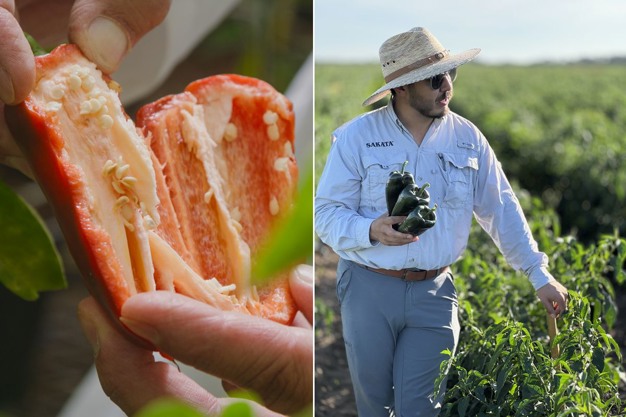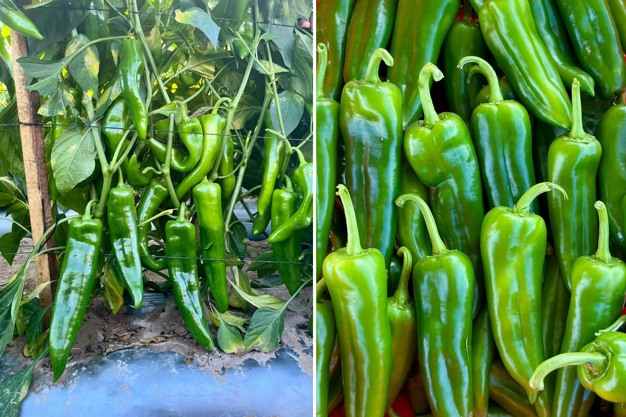In recent years, the demand for hot pepper has grown considerably as they are increasingly incorporated in a wide range of cuisines. More and more people develop a taste for spicy food and as a result, the everyday consumption of hot peppers continues to rise. "This trend is particularly noticeable in households where diverse culinary traditions are embraced," says Salvador Hurtado, Hot Pepper Product Manager with Sakata Seed. The overall demand for hot peppers has been consistently high, ranging from consumers using jalapenos on pizzas to salsas during Superbowl Sunday.
Increased availability
Sakata has responded by a stronger focus on breeding hot pepper varieties. This increasing availability of different types of hot peppers has played a crucial role in attracting more consumers. "From mild to extremely hot varieties, the diverse range appeals to both spice enthusiasts and those new to spicy foods," commented Hurtado. While hot peppers are grown in the U.S. market, Mexico has year-round availability on many varieties, ensuring consistent supply and accessibility for consumers in North America.
Influence of food shows
What's also driving consumption is the popularity of food shows, some of which are dedicated entirely to spicy food. These shows often highlight unique recipes and organize exciting challenges around eating spicy dishes. This has inspired many viewers to explore and enjoy hot peppers themselves.
These factors combined have contributed to a notable rise in the demand for hot peppers, making them a staple in many kitchens around the world and some chasing the dragon for heat units. Sakata offers hot peppers for many different segments, from anaheims to poblanos.

Consumer preferences
Consumers are particularly interested in peppers with a long shelf-life, so they can use them for an extended period without spoiling. Size also is an important factor, with larger peppers being favored for their ease of handling and greater value. "The heat level of the pepper, measured in Scovilles (SHU), is crucial as consumers look for a balance of heat that matches their personal taste preferences, whether they enjoy mild, moderate, or extremely hot varieties. Additionally, the visual appeal plays a significant role. Bright, vibrant colors are often associated with freshness and quality, making the peppers more attractive and desirable. "These attributes collectively influence consumer choices, guiding them towards peppers that offer the best quality and culinary experience," Hurtado commented.
Grower traits
For growers on the other hand, the success and viability of cultivating hot peppers is driven by other factors. High yield is a primary consideration as it directly impacts the profitability and efficiency of their operation. Disease resistance is equally critical with an emphasis on resilience against soil-borne, bacterial, and viral diseases, ensuring healthy crops and reducing losses. Additionally, ease of harvesting is a significant factor as hand labor can be costly. "Peppers that are easier to harvest can help reduce labor expenses and improve overall efficiency." Just like the consumer, growers also favor a pepper with a long shelf-life as it allows them to remain fresh during transportation and storage. "Whether a grower aims to supply peppers for the fresh or processing market, these traits must be carefully balanced to meet the specific demands and maximize the return on investment," commented Hurtado.

XHP 8440 anaheim pepper.
Varieties that have it all
Taking into account the preferences from consumers as well as growers, there are two varieties Hurtado wants to highlight:
- XHP 8440 is an anaheim pepper that can be grown in dry and hot areas where soil issues are prevalent. The variety has a high tolerance to blossom end rot and also has a great yield potential. Sakata is looking forward to offering this variety in the Desert Southwest of the U.S. as well as in key areas in Mexico.
- Corsario XHP 1982 is a poblano pepper that will be launched this summer. "With 95 percent two-lobed fruit, it is the most aesthetic variety I have seen so far," shared Hurtado. In addition, it has Pc resistance, which is key for this segment and for the East Coast of the U.S. "We are excited to launch this chocolate maturing poblano and know that it will be a success for the fresh market."
As Sakata's Hot Pepper Product Manager, Hurtado collaborates closely with the company's hot pepper breeder, ensuring the needs of both growers and final consumers are at the forefront of the company's efforts. "We work together, developing and testing hot pepper varieties that meet market demands ad deliver exceptional quality from farm to table."
Click on the video to see what it takes to build a hot pepper program.
 For more information:
For more information:
Salvador Hurtado
Sakata Seed
Tel: (+1) 408-695-1079
shurtado@sakata.com
www.sakatavegetables.com
